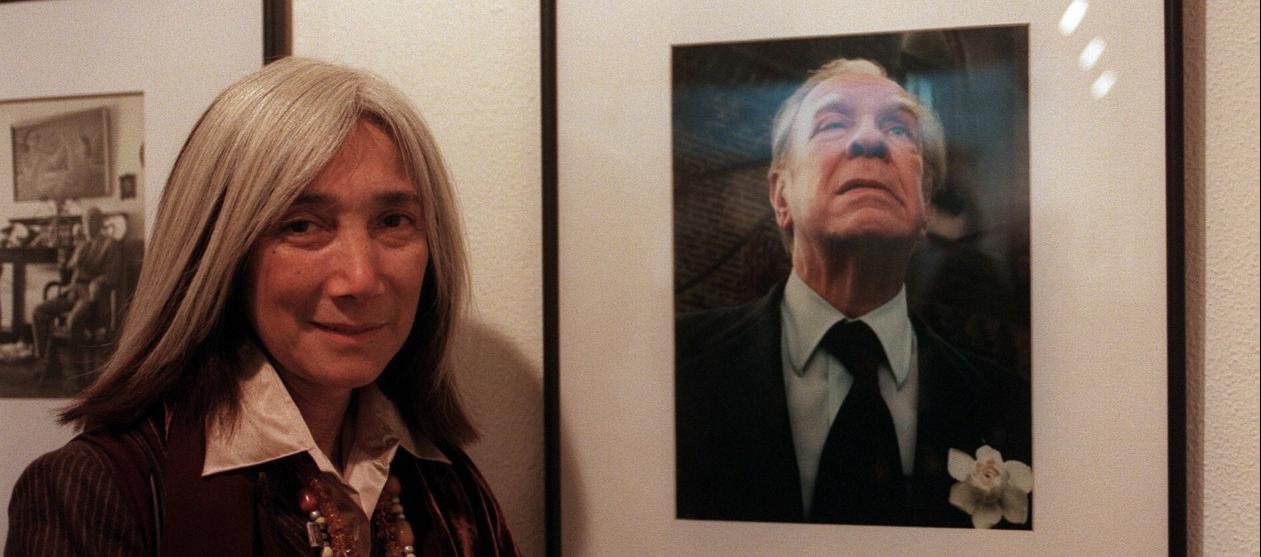The Argentine writer and translator was 86 years old.
The Argentine writer and translator María Kodama, widow and main disseminator of the work of Jorge Luis Borges, died this Sunday at the age of 86, reported sources close to her.
As shared by his lawyer, Fernando Soto, on his Twitter account: «Your friend and your lawyer fire you. Now you will enter the ‘great sea’ with your dear Borges. May you rest in peace, Maria.”
María Kodama was born on March 10, 1937 in Buenos Aires, the daughter of the Japanese Yosaburo Kodama and the Argentine María Antonia Schweizer, of Swiss-German, English and Spanish descent.
She graduated with a degree in Literature from the University of Buenos Aires and specialized in Saxon and Icelandic literature, of which she made translations into Spanish.
Kodama came into contact with the work of Jorge Luis Borges (1899-1986) as a child.
At the age of 7, an English teacher read the writer’s ‘Two English poems’ to him. A year later she read the beginning of the story ‘The circular ruins’ in a magazine. And when she was 12 she was taken to a conference given by Borges.
When he was 16 and he was 54, he bumped into Borges on the street, outside a bookstore. She told him that she was going to study Literature and he invited her to study Old English together. They were never separated again.
Over time, from a disciple she became a companion and friend of Borges and, finally, his wife.
“Our distinguished relationship went through different facets over time until it culminated in the love that inhabited us (…) That love of which he left traces throughout his books without telling me, until he revealed it to me,” Kodama wrote in ‘Tribute to Borges’, a book he published in 2016.
In 1967, Borges married another woman, Elsa Astete, a marriage that lasted a few years, during which time Kodama continued to see the Argentine writer.
In 1975 they traveled together to the United States, inaugurating the many adventures they shared around the world.
Kodama also shared with Borges the compilation and translation of the texts of ‘Brief Anglo-Saxon Anthology’ (1978), the writing of ‘Atlas’ (1984) -testimony of the trips they made together-, the translation of ‘The hallucination of Cylfi ‘, by Snorri Sturluson, and ‘The Pillow Book’, by Sei Shonagon.
In November 1985, after Borges was diagnosed with liver cancer, they traveled together to Italy and from there, shortly after, to Geneva.
On April 26, 1986, while they were in Switzerland, they were married by proxy before the Paraguayan Justice and Borges declared her his universal heir, in a fact not without controversy, since her detractors accused her of having forced him to do so.
She defended herself by arguing that she never knew, before the writer’s death, that she would remain as universal heir and that, if she had known, she would never have accepted.
Borges, whom Kodama always referred to as you and defined as the love of his life, passed away on June 14, 1986 in Geneva.
«The best teaching that Borges has left me is to enjoy life, that life is wonderful. We traveled a lot, we studied many languages…Everything was very fun, we had a great time. Life was a game with him,” Kodama told EFE in 2015.
After Borges’s death, some people who had been related to the writer maintained that Kodama had taken him to Switzerland against his will, had induced him to marry and name her universal heir.
Kodama always denied these accusations and called his accusers “monsters” moved by “jealousy” and “envy”.
In 1988 Kodama created the Jorge Luis Borges International Foundation, from which he dedicated himself to disseminating the writer’s work through talks, seminars, conferences and exhibitions at a national and international level.
“People tell me that my biggest job is to make people feel like it’s alive and that’s been my job for 30 years. That is to say, it is to give your life for something, and you give your life only for something that you love madly; if not, you don’t. Because I love him madly, otherwise I wouldn’t do it,” Kodama said in an interview with EFE in 2016.
EFE
